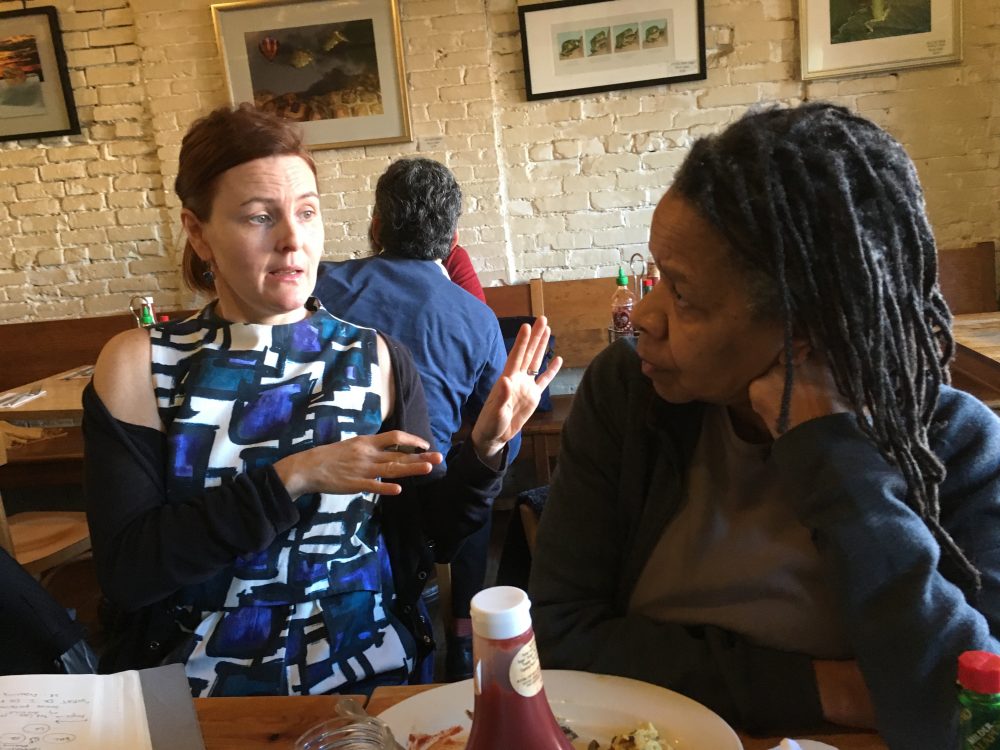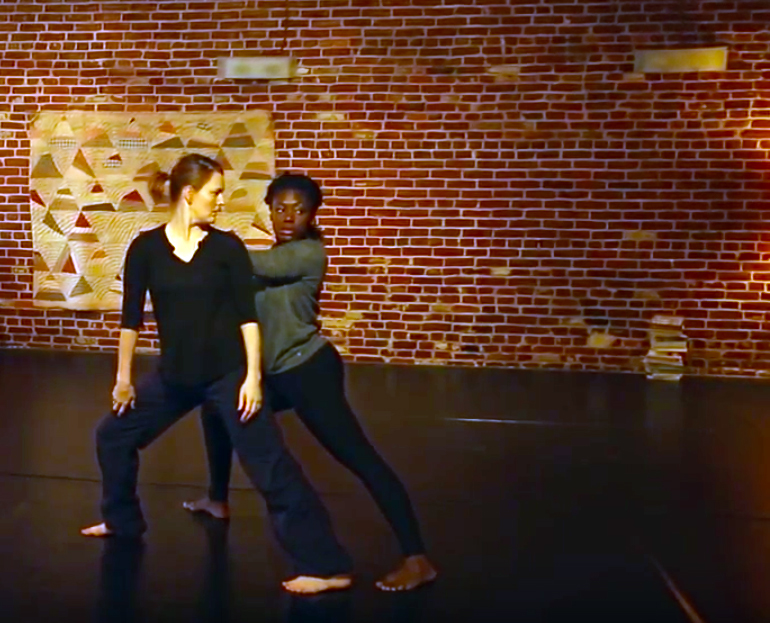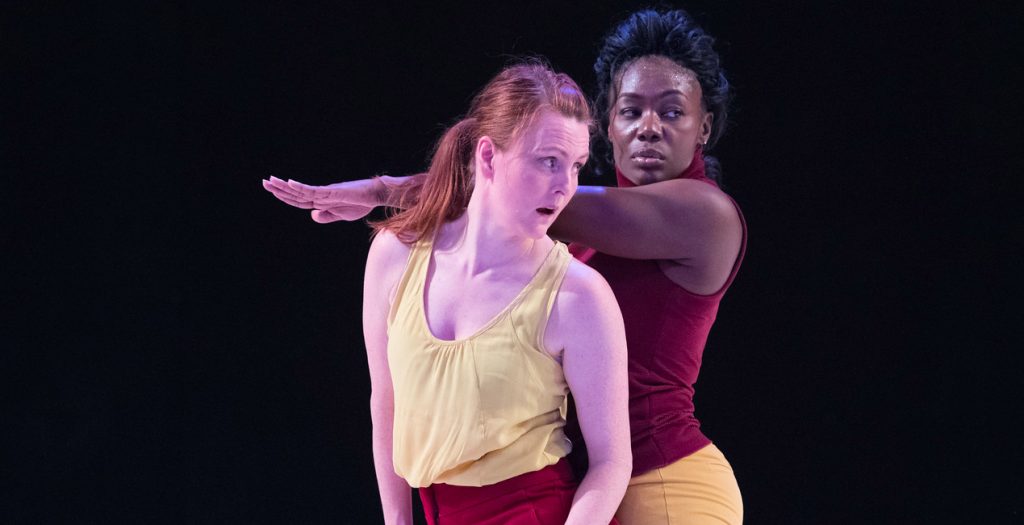
September 2015
Angie and I met for a week of rehearsal in Columbus at The Ohio State University (OSU), just the two of us. By now, dancing with Angie is thinking with Angie about dancing; we have worked together as collaborating artists for over 18 years. Angie’s own creative research as a performer and director is dynamically available in our ongoing exchange. We have had a longstanding fascination with the timbre and timing of each other’s dancing. When we work together we each feel the reference of studio days long gone by, particular attention to details that were new and worth poking at. (Why isn’t that enough for dance-making? Is that enough?) Trying something new with her assumes our collective histories, the hundreds of hours we’ve spent examining the what that transpires when dance happens.
In this pre-project residency, we came up with a simple structure: alternating solo passes down the depth of the theater space. Generally, our interest came down to the flow of disparate actions: ungainly only because of the proximity of one to another. They’re worth absorbing at face value. We know what we mean by our dancing. The flow between us quickly lost any self-consciousness and became back-and-forth play of call and response. This form fits us. We both remember a series of days in the studio, years ago, early in the making of Necessary Beauty (2008). We were taking turns dancing solo, along with Kathleen Fisher, quietly enthralled, slowly foraging, mindful of actions in sequence. What we gained: ways of dancing more than dances themselves. Ultimately, I don’t remember what we kept of that dance material. We held onto how it felt to work this deeply.
The work was meaningful; meaning was present enough. Around the time we began, I came across How Reading Is Written, a book by Astrid Lorange about Gertrude Stein.[1] From her introduction:
Stein knew that it was impossible to write without meaning; meaning happens, irrevocably. Her compositional aim was not to disrupt, dislocate, multiply, or cloud meaning, even if these things may happen for a reader when engaging with her work. What Stein’s work proposes, and what I attempt to formulate in this study, is that the compositional practices of reading and writing are constructive experiences that produce and investigate the contexts and relations of language in a specific occasion.
Stein’s strategy seemed remarkably choreographic. In reading her work, a reader ingested chunks of time-based meaning-making, free to peruse and infer according to her own perspective. Nice. I substituted “dance” for “write” and got on with it.
March 2016
Angie, Christal and I begin in the studio. There’s always a first move in space but this time, because we haven’t worked together before, the room is wide open. We have nothing to prove or re-prove. We work quickly. Right away I’m curious about their manner of attention, which is not the same as style. They value, differently. They’ve accumulated years of practice in the performance of actions. What they value and what they share (or show) speaks of their histories. They move dialectically, phrasing movement with different inferences and assumptions that show up in their timing and their focus. In one short phrase they each draw different conclusions on what is important to notice. Christal brings out a rhythmic backbeat and a “you see this?” inflection that talks back and forth. She moves. I read in her moving her histories of storytelling and storytellers (Chuck Davis’ African American Dance Ensemble, Jawole Willa Jo Zollar’s Urban Bush Women, her own company INSPIRIT) and whatever assumptions I choose to make about our histories as black women in America and in this field. We don’t know each other very well yet, but we’re building our house. Angie’s dancing, which I’ve known and loved for years, is quick and responsive to our trio of information.

We have a good time. There’s lots to talk about, lots of references emerge. We are all familiar with the racial visibilities in contemporary dance, having to do with who shows up, doing what kind of dancing, speaking to what manner and what color of audience, satisfying (or not satisfying) what expectations all involved may carry. It’s a heavy, well-trodden load of assumption that still seems to need addressing, or at least noticing, or then maybe not at all. We dig into all that, as well as the tone of the gesture itself, by being present to the situation. By the end of the three days we’ve crafted a duet for Angie and Christal that will keep its shape fairly intact throughout the process. There is no theme, no intention beyond seeing what happens when we show up to make a dance.
Syntax, though, is also showing up. Syntax, generally thought of as the dynamic structural elements of language, is also choreographic. It could be imagined as a catalytic action, its own verb, felt and observed in time, space and energy. The Lorange quote about Gertrude Stein swims with my sense of David Foster Wallace’s shaping of time and event. Angie and Christal are modeling their attention to the movement and to each other based on their intuitive reasoning as well as what directives are offered. I move the work forward, noting the irregular joining of this next to this next to that. Irregular, unfamiliar, following a thread of new consistency. A new syntax is forming.

- Lorange, Astrid. How Reading Is Written: A Brief Index to Gertrude Stein. Middletown, Wesleyan University Press, 2014. The title of this e-book is a nod to Lorange's book. ↵